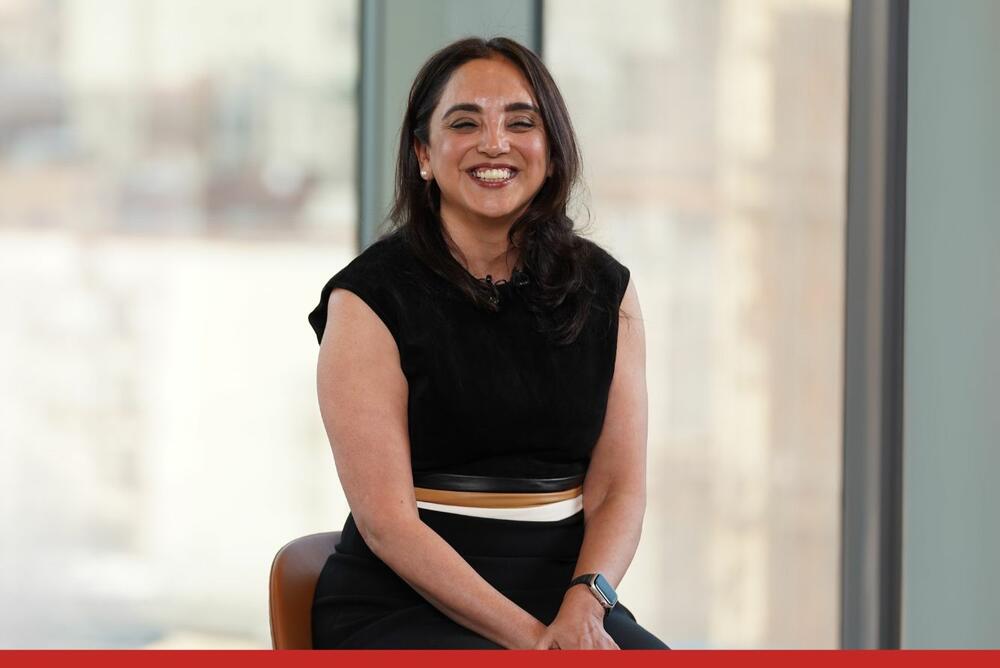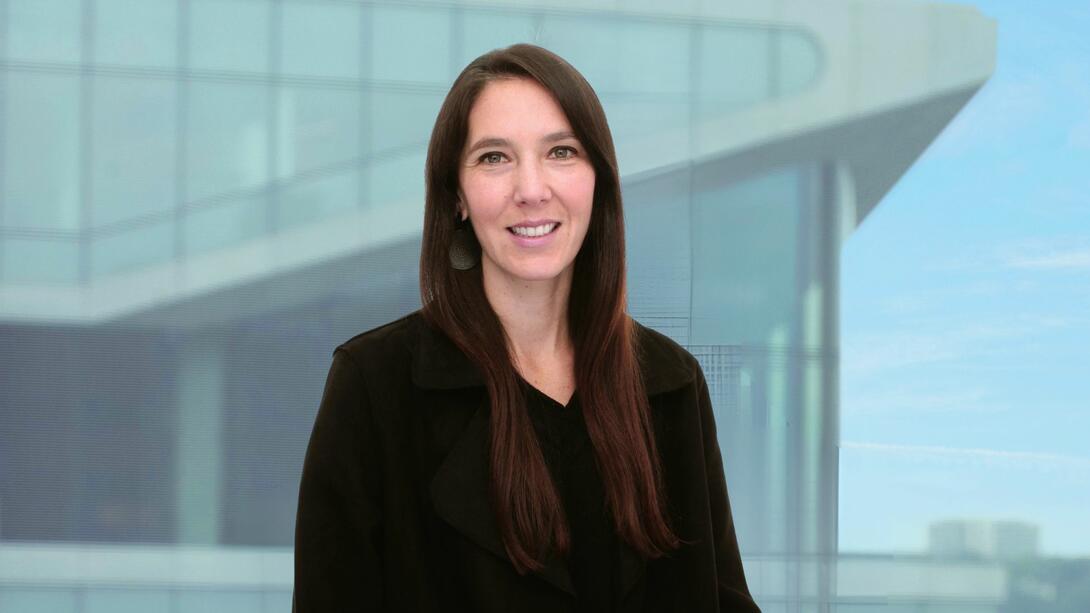
Think Bigger: A New Way to Approach Innovation
- How can management and teams embrace big thinking without perceiving it as exponentially more work?
- What are the correct steps to implementing and executing big ideas?
- How can I strategically collaborate on an idea and ensure it is heard, accepted, and implemented?
- How can an organization encourage creative, out-of-the-box thinking?
- How can we help individuals connect the dots when they struggle to see the big picture?
- When entering a new organization, when is the right time to initiate change?
- How do you determine when to persist with an original decision versus pivoting to a new direction?
- How can companies address cultural challenges, such as micromanagement, at the board level?
- How can complex problems be broken down into more manageable components?
- Upcoming Programs: Strategy and Innovation
Q&A with Sheena Iyengar
In a world overflowing with choices and fast-paced change, the most innovative ideas often get lost before they ever see the light of day. Whether you’re a business leader trying to bring a bold solution to market or a team member looking to drive meaningful change, the challenge is the same: how do you move from idea to impact in a way that actually works?
Enter Professor Sheena Iyengar—renowned expert in choice and decision-making, and the S.T. Lee Professor of Business at Columbia Business School. Drawing on her extensive research and real-world consulting experience, she developed the groundbreaking Think Bigger: Start Choosing Innovative Solutions program, which equips executives with a practical framework for generating, shaping, and implementing powerful ideas. We sat down with Professor Iyengar to explore what makes innovation stick, how to make big thinking feel manageable, and what it really takes to move good ideas through an organization.

How can management and teams embrace big thinking without perceiving it as exponentially more work?
A significant challenge organizations face is the assumption that thinking big requires an overwhelming amount of additional effort. However, 72% of companies fail at implementing solutions because they do not define the problem accurately. Many assume the problem is self-evident and that consensus already exists, leading them to jump straight to solutions without fully understanding the issue.
As Einstein famously stated, "If I had an hour to save the planet, I would spend the first 55 minutes thinking about the problem and five minutes thinking about the solution." To cultivate a problem-first mindset, a simple yet effective approach is to give team members five minutes to independently reflect on the problem and identify 3 to 5 key challenges that make it difficult to solve. When problems are clearly defined and made concrete, they become easier to address.
What are the correct steps to implementing and executing big ideas?
When introducing something new—whether in a company, a family, or even a country—the first step is to identify the key broker within the organization. This is the individual who holds influence, not necessarily due to formal authority but because they are trusted and respected.
Securing their support can significantly accelerate adoption. The adoption of new ideas typically follows a life cycle: innovators embrace new concepts first, followed by early adopters, then the early and late majority, with the final group being the resisters. The key to success is reaching early adopters and the early majority as quickly as possible. To achieve this, organizations must identify and engage key influencers who can champion the idea.
How can I strategically collaborate on an idea and ensure it is heard, accepted, and implemented?
We often assume we already understand both the problem and the solution. However, successful collaboration requires helping others arrive at that same understanding. While there may be flexibility in solutions, alignment on the problem itself is critical. If stakeholders do not share a common understanding of the problem, they are unlikely to unite behind any proposed solution. Therefore, the first step in strategic collaboration is framing the problem in a way that resonates with everyone involved.
How can an organization encourage creative, out-of-the-box thinking?
Thinking outside the box and generating creative ideas is often perceived as an innate talent, but in reality, it is a skill that can be cultivated. Companies that invest in training employees to think creatively gain a competitive advantage, particularly in today's fast-changing world.
There are several ways to foster this mindset:
- Implement in-house brainstorming sessions or workshops focused on problem-solving and creative thinking.
- Rotate high-performing employees across different roles to expose them to diverse challenges.
- Establish structured systems where employees regularly propose solutions to specific problems, ensuring that these ideas are not ignored but actively addressed.
By integrating creativity into the organizational culture, companies can drive continuous innovation.
How can we help individuals connect the dots when they struggle to see the big picture?
When developing an idea, there is often a moment when one feels close to a breakthrough but unable to fully piece everything together—this is the "valley of despair," a point where frustration leads many to give up. There are two effective methods to overcome this challenge:
- Encourage individual reflection. Have team members independently analyze the problem and then identify other industries or contexts where a similar challenge has been successfully addressed. This comparative analysis can reveal fresh perspectives and support radical innovation.
- Seek external viewpoints. Engaging with individuals outside of one's immediate professional circle can provide novel insights and alternative solutions.
A well-known example is Mark Granovetter's work on the strength of weak ties, which highlights how connections outside our usual networks often lead to breakthrough ideas.
When entering a new organization, when is the right time to initiate change?
Before implementing change, it is essential to understand the organization's existing dynamics. A great example comes from Dwight D. Eisenhower's tenure as president of Columbia University. When asked where new sidewalks should be built, he responded, “Do nothing for a year. Observe where students naturally walk, and then pave those paths.”
This approach underscores the importance of identifying areas where change is already organically emerging. If an initiative aligns with existing customer needs and behaviors, its adoption will be more seamless and widely accepted.
How do you determine when to persist with an original decision versus pivoting to a new direction?
This decision is inherently complex and requires careful evaluation. A useful approach is to monitor recurring concerns or challenges. If the same issue arises repeatedly, it is critical to assess whether adjustments can be made to address it or if a fundamental pivot is necessary.
If pivoting, consider:
- What new direction should be pursued?
- What challenges might arise from this shift?
- How can those challenges be mitigated?
Ultimately, decision-making is an iterative process—core to any innovation process and essential for both incremental innovation and radical innovation alike.
How can companies address cultural challenges, such as micromanagement, at the board level?
Micromanagement often stems from two primary concerns: a lack of trust in employees' attention to detail or a desire to remain actively involved. The best way to address this is by shifting the focus of micromanagers:
- Ask for their guidance on the big picture. Engaging them in higher-level strategic discussions redirects their focus from day-to-day minutiae to broader objectives.
- Clearly communicate your process. Providing an overview of how you will approach and execute key tasks can instill confidence and reduce the need for excessive oversight.
By reframing their role and reinforcing trust, micromanagement tendencies can be mitigated.
How can complex problems be broken down into more manageable components?
In the Think Bigger program, I emphasize a structured approach to problem-solving:
- Identify the challenges. List all obstacles associated with the problem and categorize them as large, medium, or small.
- Prioritize the challenges. Assess which issues, if resolved, would have the most meaningful impact.
- Consider stakeholders. Understand the priorities of key players—your organization, your target audience, and external parties. Determine which challenges are critical versus optional.
By defining clear criteria for judgment, teams can systematically generate viable solutions—essential in both incremental innovation and technological innovation efforts.
Interested in Applying Sheena’s Program?
If you have questions about the program or are interested in enrolling or sponsoring someone in your organization, please don’t hesitate to contact Cristina Ordonez at cristina.ordonez@gsb.columbia.edu or +1 212-853-4823.
Other Upcoming Strategy and Innovation Programs
Sign Up for Email Alerts
Sign up for program updates and content relevant to today's business leaders from Columbia Business School Executive Education.

